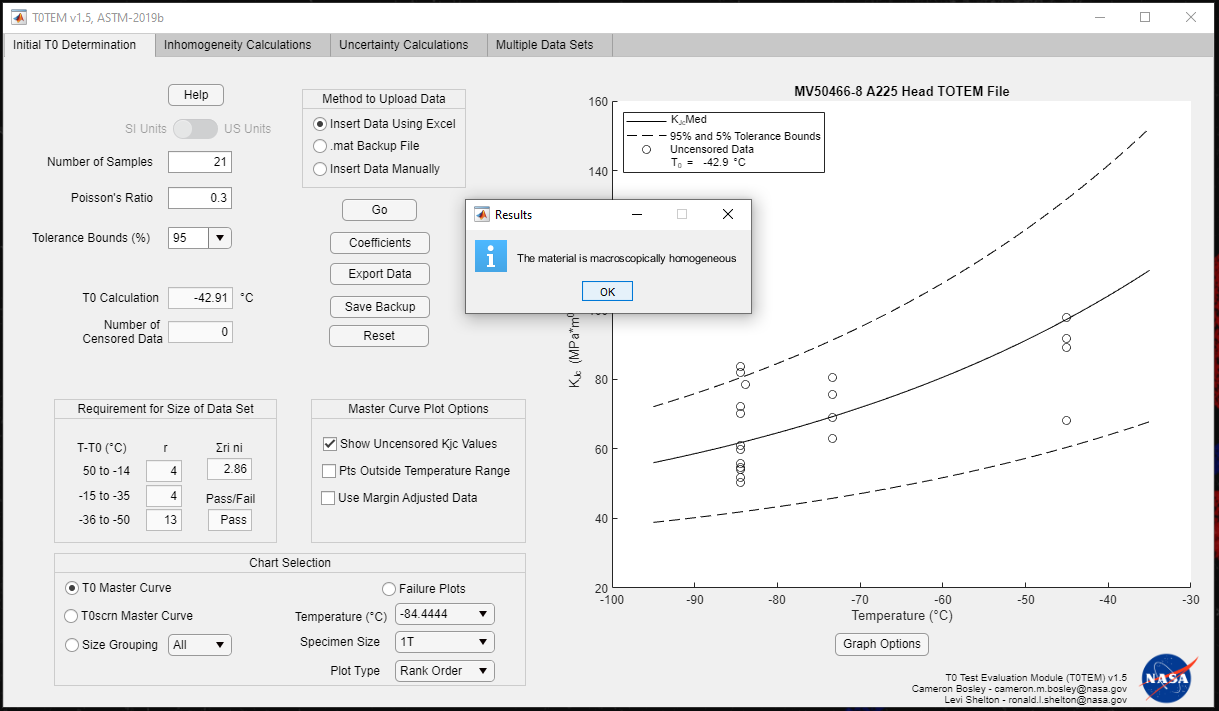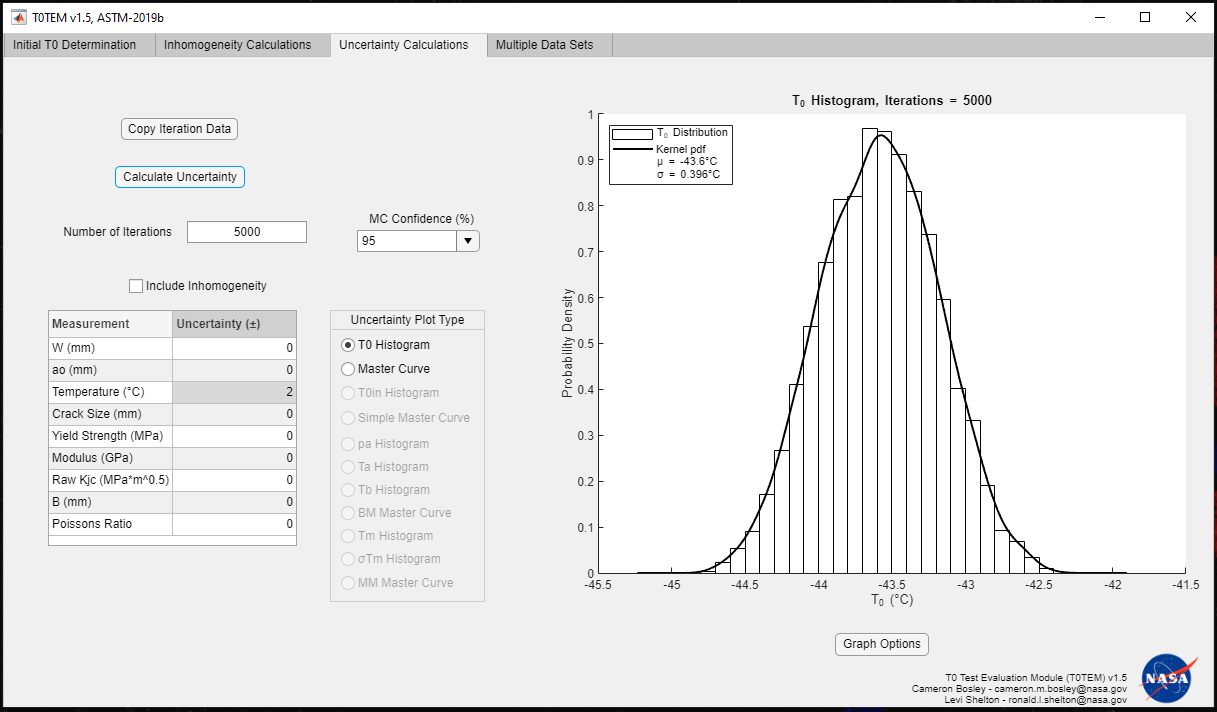The Office of Safety and Mission Assurance (OSMA) Layered Pressure Vessel (LPV) Risk Mitigation project team designed software to simplify and improve calculations required by the ASTM E1921, Standard Test Method for Determination of Reference Temperature, T0, for Ferritic Steels in the Transition Range.
Understanding the material properties of pressure vessel components, like transition temperature (T0), is key to ensuring safe operation and fitness for service evaluations. Transition temperature testing of ferritic steels evaluates the ductile to brittle transition temperature, where the behavior of the steel changes from controlled ductile tearing to uncontrolled brittle fracture.
However, the calculations and plots required by this policy are iterative in nature and require significant effort to produce by standard manual calculations. In addition to analysis of a complete data set, intermediate analysis during testing is beneficial in determining optimal test temperatures. Given the exhaustive nature of calculating the transition temperature, being able to quickly update target temperatures is a significant benefit to the quality of tests and the number of tests required.

Layered Pressure Vessel Data Analyzed with T0TEM
To reduce the analysis time of transition temperature test data sets produced for this effort, two Marshall Space Flight Center engineers — Levi Shelton, materials engineer, Damage Tolerance Assessment Branch; and Cameron Bosley, materials test engineer, Jacobs Engineering and Science Services and Skills Augmentation Group — in conjunction with the ASTM E1921 committee, developed the T0 Test Evaluation Module (T0TEM). T0TEM v1.5 is a software application created under the LPV Risk Mitigation project and LPV certification effort to calculate the E1921 Master Curve along with all required data and validity checks.
The creation of a standard program significantly improves the consistency of reported results. T0TEM also calculates the results and plots required for the E1921 inhomogeneity annex to determine whether a material behaves in a homogenous manner.
“Hundreds of hours of analysis time were saved by creating this program,” said Clifton Arnold, Pressure Systems program executive, OSMA. “T0TEM is a game changer in saving not only time but also resources and ensuring consistent results.”
The LPV Risk Mitigation project team compared results generated by T0TEM to the validation data sets provided by ASTM with good concurrence. ASTM committee members then reviewed and applied T0TEM to other data sets with satisfactory results.
The LPV Risk Mitigation project team originally released T0TEM to the NASA Software Repository and publicly via SourceForge in May 2020, then released version 1.5 in April 2021 with minor functionality updates and additional statistical analysis methods. Currently, T0TEM is balloted by the ASTM committee to be added to the E1921 standard as a recommended software for performing the transition temperature calculations.
For more information, contact Clifton Arnold.

Analysis of Cumulative Test Measurement Uncertainty on Final T0